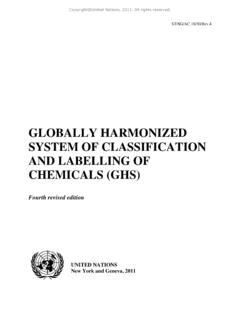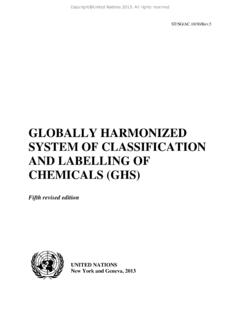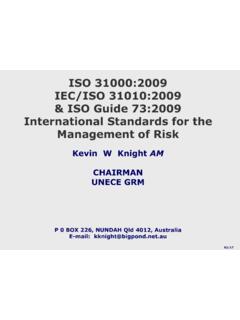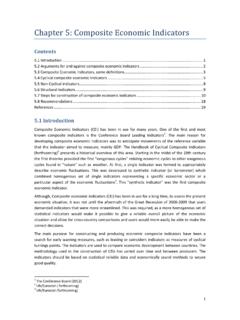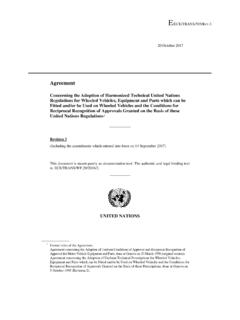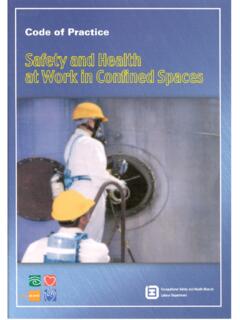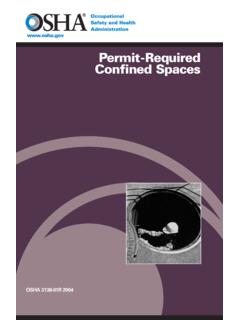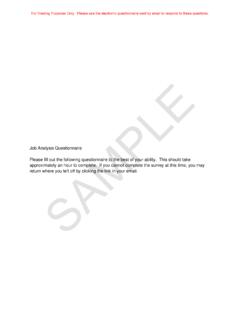Transcription of Agreement - UNECE
1 Agreement Concerning the Adoption of Harmonized Technical United Nations Regulations for Wheeled Vehicles, Equipment and Parts which can be Fitted and/or be Used on Wheeled Vehicles and the Conditions for Reciprocal Recognition of Approvals Granted on the Basis of these United Nations Regulations* (Revision 3, including the amendments which entered into force on 14 September 2017) _____ Addendum 78: UN Regulation No. 79 Revision 4 Incorporating all valid text up to: Supplement 1 to the 02 series of amendments Date of entry into force: 18 October 2018 03 series of amendments Date of entry into force: 18 October 2018 Uniform provisions concerning the approval of vehicles with regard to steering equipment This document is meant purely as documentation tool.
2 The authentic and legal binding texts are: ECE/ and ECE/ (as amended by paragraph 92 of the report ECE/ ). _____ UNITED NATIONS * Former titles of the Agreement : Agreement concerning the Adoption of Uniform Conditions of Approval and Reciprocal Recognition of Approval for Motor Vehicle Equipment and Parts, done at Geneva on 20 March 1958 (original version); Agreement concerning the Adoption of Uniform Technical Prescriptions for Wheeled Vehicles, Equipment and Parts which can be Fitted and/or be Used on Wheeled Vehicles and the Conditions for Reciprocal Recognition of Approvals Granted on the Basis of these Prescriptions, done at Geneva on 5 October 1995 (Revision 2).
3 E/ECE/324 E/ECE/TRANS/505 7 November 2018 E/ECE/324 E/ECE/TRANS/505 3 UN Regulation No. 79 Uniform provisions concerning the approval of vehicles with regard to steering equipment Contents Page Regulation Introduction .. 4 1. Scope .. 5 2. Definitions .. 5 3. Application for approval .. 11 4. Approval .. 11 5. Constructions provisions .. 12 6. Test provisions .. 28 7. Conformity of production .. 31 8. Penalties for non-conformity of production .. 31 9. Modifications and extension of approval of the vehicle type .. 31 10. Production definitively discontinued.
4 32 11. Names and addresses of Technical Services responsible for conducting approval tests and of Type Approval Authorities .. 32 12. Transitional provisions .. 32 Annexes 1 Communication .. 34 2 Arrangements of approval marks .. 36 3 Braking performance for vehicles using the same energy source to supply steering equipment and braking device .. 37 4 Additional provisions for vehicles equipped with Auxiliary Steering Equipment .. 39 5 Provision for trailers having hydraulic steering transmission .. 41 6 Special requirements to be applied to the safety aspects of complex electronic vehicle control systems.
5 42 Appendix 1 - Model assessment form for electronic systems .. 48 7 Special provisions for the powering of trailer steering systems from the towing vehicle .. 50 8 Test requirements for corrective and automatically commanded steering 53 E/ECE/324 E/ECE/TRANS/505 4 Introduction The intention of the Regulation is to establish uniform provisions for the layout and performance of steering systems fitted to vehicles used on the road. Traditionally the major requirement has been that the main steering system contains a positive mechanical link between the steering control, normally the steering wheel, and the road wheels in order to determine the path of the vehicle.
6 The mechanical link, if amply dimensioned, has been regarded as not being liable to failure. Advancing technology, coupled with the wish to improve occupant safety by elimination of the mechanical steering column, and the production advantages associated with easier transfer of the steering control between left and right hand drive vehicles, has led to a review of the traditional approach and the Regulation is now amended to take account of the new technologies. Accordingly it will now be possible to have steering systems in which there is not any positive mechanical connection between the steering control and the road wheels.
7 Systems whereby the driver remains in primary control of the vehicle but may be helped by the steering system being influenced by signals initiated on-board the vehicle are defined as "Advanced Driver Assistance Steering Systems". Such systems can incorporate an "Automatically Commanded Steering Function", for example, using passive infrastructure features to assist the driver in keeping the vehicle on an ideal path (Lane Guidance, Lane Keeping or Heading Control), to assist the driver in manoeuvring the vehicle at low speed in confined spaces or to assist the driver in coming to rest at a pre-defined point (Bus Stop Guidance).
8 Advanced Driver Assistance Steering Systems can also incorporate a "Corrective Steering Function" that, for example, warns the driver of any deviation from the chosen lane (Lane Departure Warning), corrects the steering angle to prevent departure from the chosen lane (Lane Departure Avoidance) or corrects the steering angle of one or more wheels to improve the vehicle's dynamic behaviour or stability. In the case of any Advanced Driver Assistance Steering System, the driver can, at all times, choose to override the assistance function by deliberate action, for example, to avoid an unforeseen object in the road.
9 It is anticipated that future technology will also allow steering to be influenced or controlled by sensors and signals generated either on or off-board the vehicle. This has led to several concerns regarding responsibility for the primary control of the vehicle and the absence of any internationally agreed data transmission protocols with respect to off-board or external control of steering. Therefore, the Regulation does not permit the general approval of systems that incorporate functions by which the steering can be controlled by external signals, for example, transmitted from roadside beacons or active features embedded into the road surface.
10 Such systems, which do not require the presence of a driver, have been defined as "Autonomous Steering Systems". This Regulation also prevents the approval of positive steering of trailers by means of electrical control from the towing vehicle as there are currently no standards applicable to this application. It is expected that at some time in the future, ISO 11992 will be amended to include messages associated with the transmission of steering control. E/ECE/324 E/ECE/TRANS/505 5 1. Scope This Regulation applies to the steering equipment of vehicles of categories M, N and This Regulation does not apply to: Steering equipment with a purely pneumatic transmission; Autonomous Steering Systems as defined in paragraph ; Steering systems exhibiting the functionality defined as ACSF of Category B2, D or E in paragraphs , , or , respectively, until specific provisions are introduced in this Regulation.


